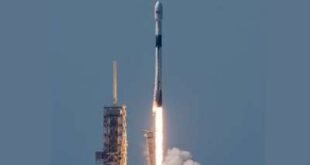
In a remarkable display of precision and adaptability, the Indian Space Research Organisation (ISRO) has successfully navigated its Pragyan rover away from a potentially hazardous lunar crater. The rover, part of the Chandrayaan-3 mission, had unexpectedly encountered a four-meter-wide crater during its exploration of the Moon’s surface.
The ISRO, renowned for its innovative approach to space exploration, quickly assessed the situation and managed to redirect the six-wheeled, solar-powered Pragyan rover to a safer path. The rover had initially approached the crater within three meters of its edge before being safely rerouted. This achievement highlights both the technical prowess of ISRO’s scientists and engineers and the agency’s commitment to ensuring the mission’s success.
Nilesh M Desai, the Director of Space Applications Centre (SAC), emphasized the significance of the rover’s timely repositioning. With only 10 days remaining for the conclusion of one lunar day, the Chandrayaan-3 mission is in a “race against time.” The mission’s primary objectives include achieving a soft landing on the lunar surface, maneuvering the Pragyan rover, and gathering scientific data through payloads attached to both the rover and the lander, Vikram.
While the mission’s first two objectives have been accomplished with finesse, the focus now turns to the third objective – the systematic collection of scientific data from the Moon’s South Pole region. The Pragyan rover, equipped with cutting-edge instruments and communication capabilities, continues to transmit valuable images and data back to ISRO’s headquarters.
Earlier, the Chandrayaan-3 mission achieved a historic milestone when its lander module successfully touched down on the Moon’s South Pole. This accomplishment established India as the fourth country, after the US, China, and Russia, to achieve such a feat. The lander module has already begun its series of experiments, relaying crucial data back to ISRO.
Furthermore, the ISRO has shared intriguing insights into the Moon’s surface conditions. The agency released a temperature variation graph, which was measured by the ChaSTE payload onboard the Vikram lander module. This payload is equipped with a temperature probe that can penetrate up to 10 cm beneath the lunar surface. The data collected through this payload will contribute to a deeper understanding of the Moon’s thermal characteristics.
As India’s Chandrayaan-3 mission continues to unfold, the world watches in awe at the nation’s remarkable achievements in space exploration. With Pragyan rover’s successful redirection, ISRO demonstrates its mastery over complex challenges, solidifying India’s position as a prominent player in the realm of lunar exploration and scientific discovery.
Sources By Agencies
 Digital Scoop India Official Platform of Digital Scoop India Featuring Latest & Best News #Articles #Bytes #Entertainment #DigitalScoopMagazine
Digital Scoop India Official Platform of Digital Scoop India Featuring Latest & Best News #Articles #Bytes #Entertainment #DigitalScoopMagazine


